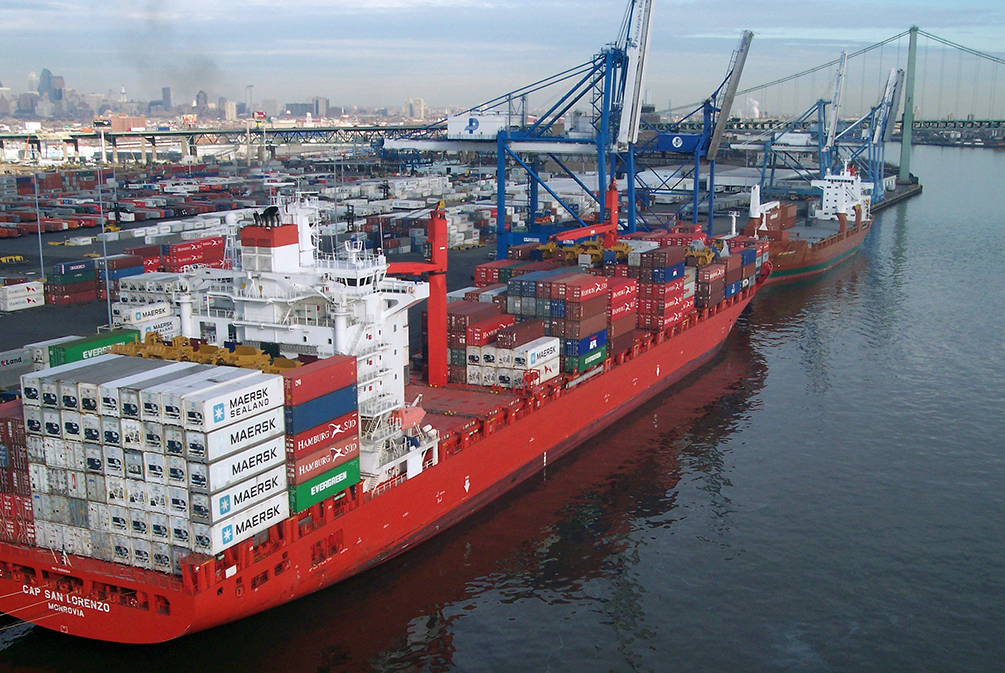U.S. fruit imports have reason for "concern" as summer comes around, says Capespan North America

Fruit importers are optimistic about fresh produce coming into North American markets, amid Covid-19 disruptions that make future difficulties inevitable. But they have an eye on potential container issues as citrus imports get into full swing and a build-up of table grape inventories due to slower movement.
Regarding the upcoming citrus import season and the end of the table grape import season, Mark Greenberg of Capespan North America told FreshFruitPortal.com that there's "a good reason to be concerned, but not to be panicked", as port operators continue working.
The pandemic and uncertainty that it brings come right as imported table grapes are finishing up their season and as the Southern Hemisphere citrus season is starting to get underway.
Though Chilean table grape volumes have been good and quality with conditions generally excellent through the season, he said, the fear of Covid-19 shifted how the market will be able to accept the product.
First, said Greenberg, some customers have shifted away from table grapes. The explanation may be that people are looking for different things when shopping for quarantine conditions.
"One is led to believe that consumers are preferring fruit that is perceived not to have been touched by other shoppers, causing preference for fruit packed in sealed bags or containers."
Also, with shoppers making fewer trips to their food retailer, they are more apt to select products that will last longer in their refrigerators and less inclined to pick up products that need to be consumed in the first few days after you buy them.
"The result is a slowdown in table grape movement and the resulting build-up of inventories as the season nears its end," he explained.
With slower movement and storage space becoming a problem, it's a challenge.
For table grape imports, this means that "it's going to be a difficult end of the season," said Greenberg.
Logistical challenges for fruit imports in Covid-19
Speaking about the team of port workers in Philadelphia, Greenberg said that they aren't facing any problems with discharge or movement of fruit.
"Port operators have done a magnificent job of maintaining operations even under these difficult circumstances," he said.
Refrigerated container shortages resulting from delays in discharging cargo at Chinese ports a few months ago could be a bit of a problem for fruit shippers in upcoming weeks.
"I think that the deeper we get into the spring and into early summer, when citrus ramps up, shippers should see increased container availability," detailed Greenberg.
And since Chile and Peru primarily use containers for table grapes, the industry will have to see how imports are impacted in the last few weeks of table grape season.
"We're working with a set of variables that we've never seen before," he said. "Growers are expecting increased challenges in picking and packing fruit, retailers are trying to safely move traffic through their shops, logistics providers are facing new challenges and we really don't know what to expect in consumers’ fresh produce buying patterns.”
Yet, Greenberg explained, as Capespan speaks to its growers and retailers, "everyone is optimistic that there will be good demand for citrus products through the spring and summer".
This is especially true of soft citrus. California's now enjoying good pricing for citrus and Capespan expects that soft citrus prices should push a bit upward as domestic supplies wind down.
When it comes to Navel oranges, it's likely that the already stable and good prices will remain the same right through the domestic citrus season in the next few months and into the summer when South African and Chilean oranges become available.














































